Christina, the friendly manager of the Rosario hostel where we stayed during a recent trip to Argentina, highly recommended the Kayak tour of the Paraná River. “Everyone I’ve sent has loved it!”, she said. We did too, but as often happens, it was the unexpected discoveries that made it especially sweet.
We thought it would be a great way to see the Paraná. The tour was supposed to be 2 to 3 hours long and an early morning start left us plenty of time to kayak and still catch our late afternoon bus to Puerto Iguazu. We were curious to learn more about the river that connected the mighty Iguazu Falls to Buenos Aires and is also the second longest river in South America after the Amazon.
Our first surprise was to learn that our Kayak trip would not be on the Paraná river at all, but on a tiny channel running parallel to the Paraná on the edge of a vast delta of islands, lagoons and wetlands that runs from about 100 miles north of Rosario south to Buenos Aries.

Rosario to Victoria Bridge that spans the Parana river and the delta just north of Rosario. Urban growth and large-scale livestock ranches are upsetting the natural balance of the delta wetlands.
It is difficult to see the outlines of the channels and islands of the delta on a map, even with Google Satellite, because the sediment-rich brown water is so similar to the land, but click on the map to the right for a clearer example of the extent of the delta across from Rosario, where we kayaked and for the location of the honey.
This is the only delta in the world that is formed upon entry to another river rather than a standing body of water like a lake or ocean. It is one of the largest coastal wetland areas in Argentina with an ecosystem rich in plant and animal life.
This delta is approximately 17,000 sq. kilometers and 300 km. long, yet it has only about 3,000 permanent residents. Living conditions are challenging with transportation only by boat and shifting sedimentary islands eroding properties and frequent flooding requiring homes to be built on stilts. On the islands near Rosario there are literally only a few dozen families, while in the southern delta area of Tigre near Buenos Aries there are hundreds of vacation homes ranging from cottages to substantial summer homes and the population increases by ten-fold in the summer.
Beekeeping on the Delta
As we rounded the bend off the Parana river into the beginning of our delta channel, I was surprised to see beehives on the island to the west.
A few minutes later we saw a house with a sign that declared “Miel” (Honey) out front! “That’s the home of Luis Sainz,” we were informed by Sebastian, our guide, “He is the beekeeper who lives on the island, would you like to see if he is home?” Sebastian explained he often buys honey from Luis. Later, while sharing a Mate he told us he was happy we bought some honey because it meant in a small way his kayak business was helping the local economy.
The delta supports a wide diversity of plants, animals and birds. Unlike much of the agricultural areas of Argentina which focus on single crops such as soy and rice, the diversity of plants and additive-free environment support organic beekeeping. Honey is produced in the delta along with other production such river fishing (surubí and sábalo), wicker and rattan (for place-mats, baskets and curtains), some lumbering and tourism.
Beekeeping is actually Luis’ second profession, he works as a psychologist in the city of Rosario. He also speaks English quite well, thanks to attending high school in Connecticut. Incidentally, upon graduation he was offered a four year scholarship to Yale which he declined to return home to Argentina. He has about 300 hives and produces between three and six tons of honey per year, selling it directly from his home and in Rosario, with the balance sold in bulk wholesale.
From Luis’ observations and testing, the predominate plants that contribute to this honey are:
- Willow (Salix humboldtiana)
- Sage (Salvia spp.)
- Caa Tay – Knotweed (Polygonum acuminatum)
- Camalote – Common Water Hyacinth (Eichhornia crassipes)
- Lily (Crinum spp.)
We bought two jars of honey from Luis and he also gave us a bottle of propolis tincture for skin irritations.

Tasting Parana Honey. Both were delicious! The honey on the left was about 10 months old and was slightly crystallized, moderately sweet and full flavored; the honey on the right was sweeter and milder tasting.
Willow blooms three times per year so this may be the predominate blossom. Winter sees no nectar production, honey is harvested in late summer and autumn.

After the kayaking adventure we anchor river-side on Sebastian’s boat and relax with a Yerba Mate (South American tea) and pastries. Sebastian explained the Argentinian tradition of drinking a Mate with close friends and family and we chatted about life on the delta. I was especially pleased that his favorite use of honey was with his Mate. We enjoyed our honey-sweetened Mate and day-dreamed about living on the delta channel.
————————————————-
Further reading and resources
Kayak and Bike Tours with Sebastian in Rosario
La Casona De Don Jaime II Hostel in Rosario
Fellowship of Yerba Mate
Beekeeping in the Paraná Delta Region (.pdf – Spanish translated to English)
The Bee Photographer – Paraná Delta
Pollen Characteristics of Paraná Delta Honey (.pdf)
Wetlands International – Paraná Delta
Paraná River



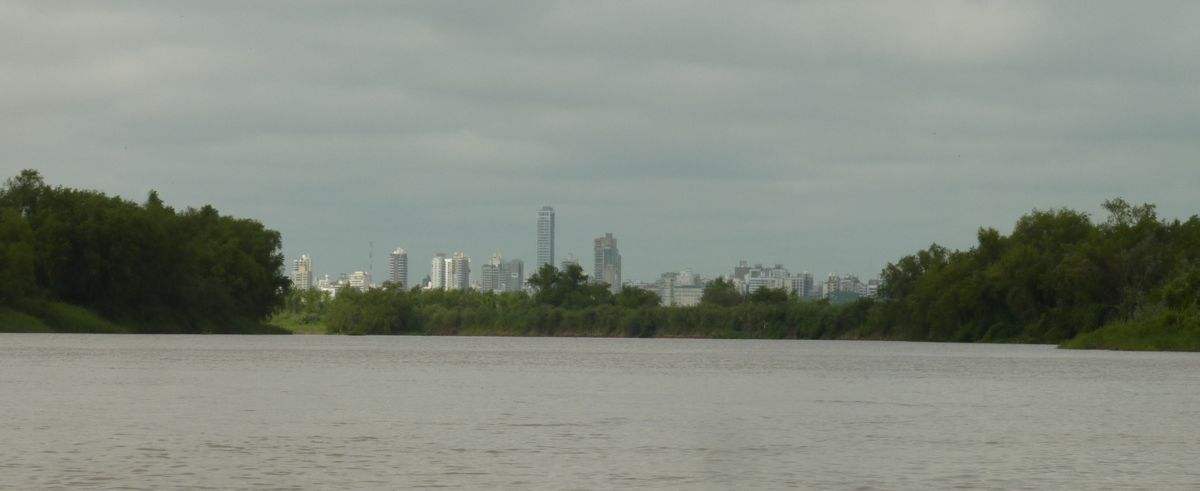

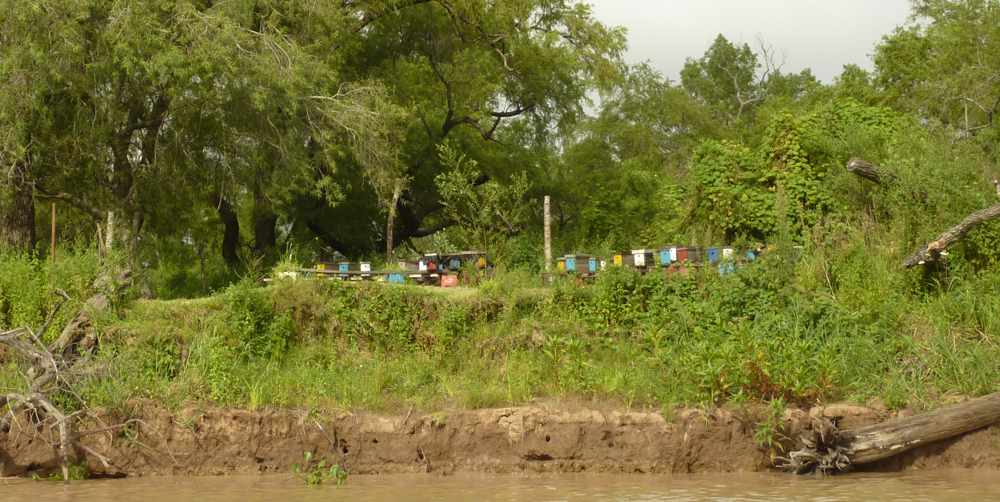


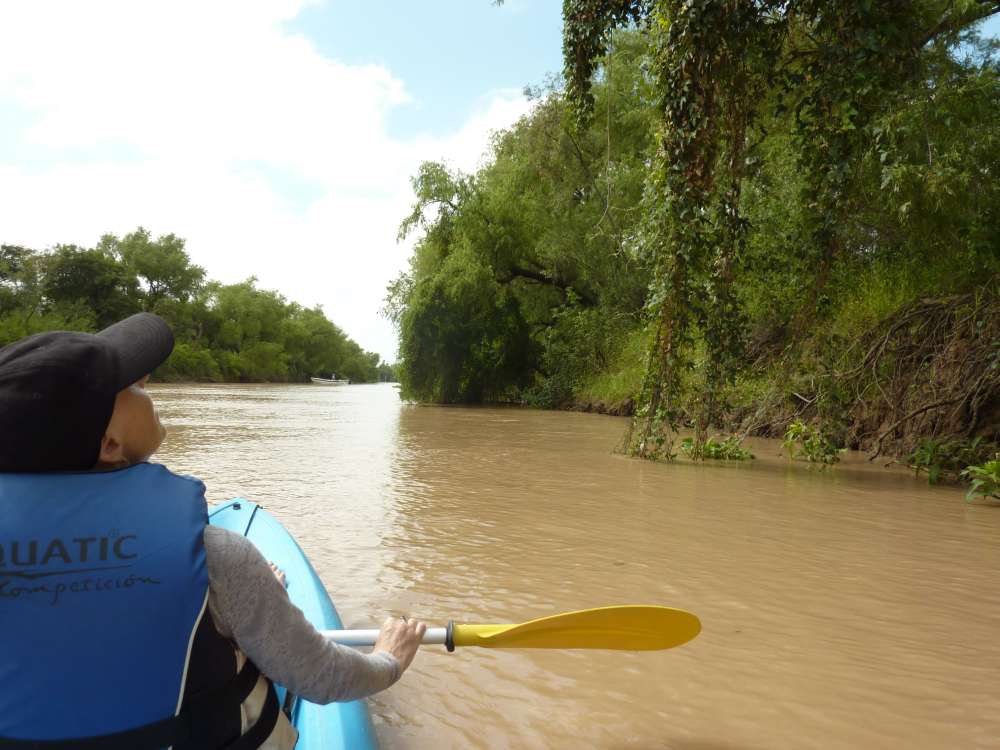
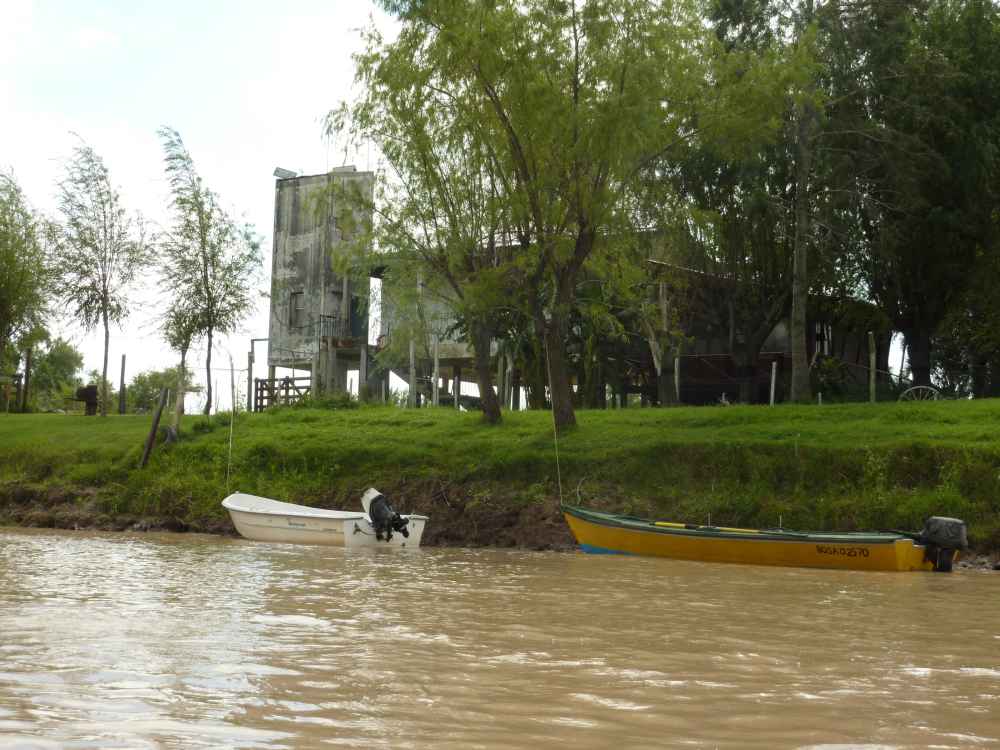
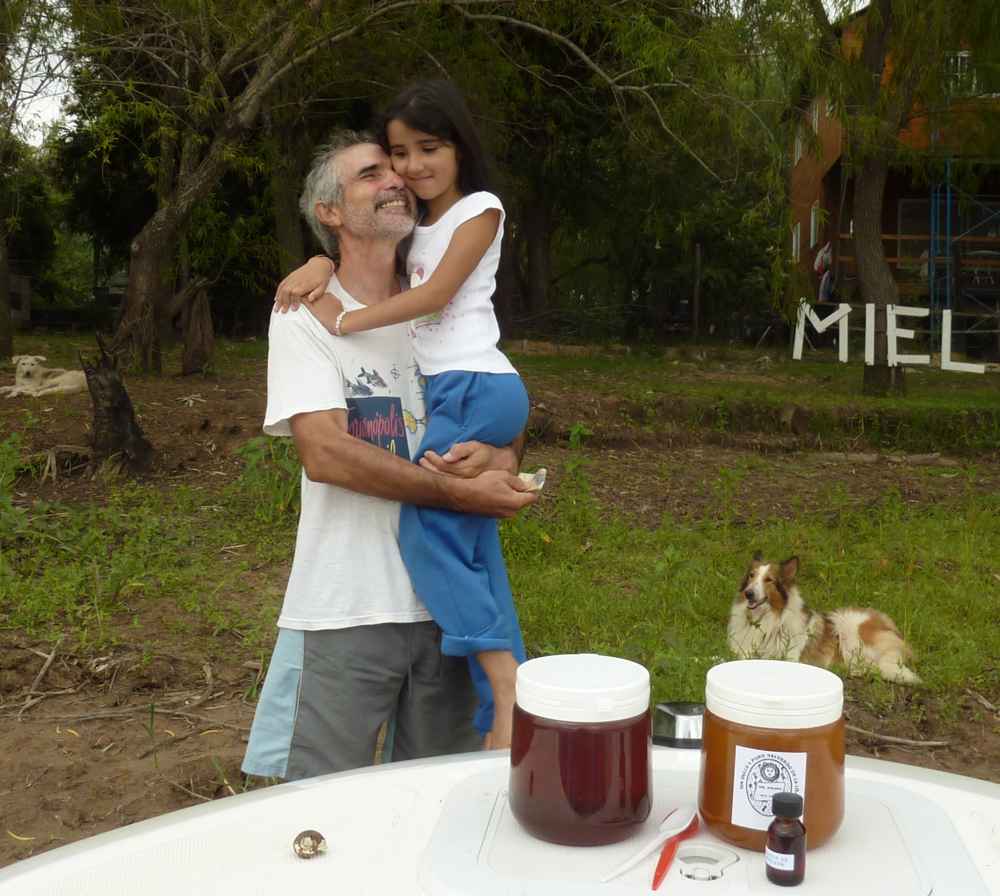


Recent Comments